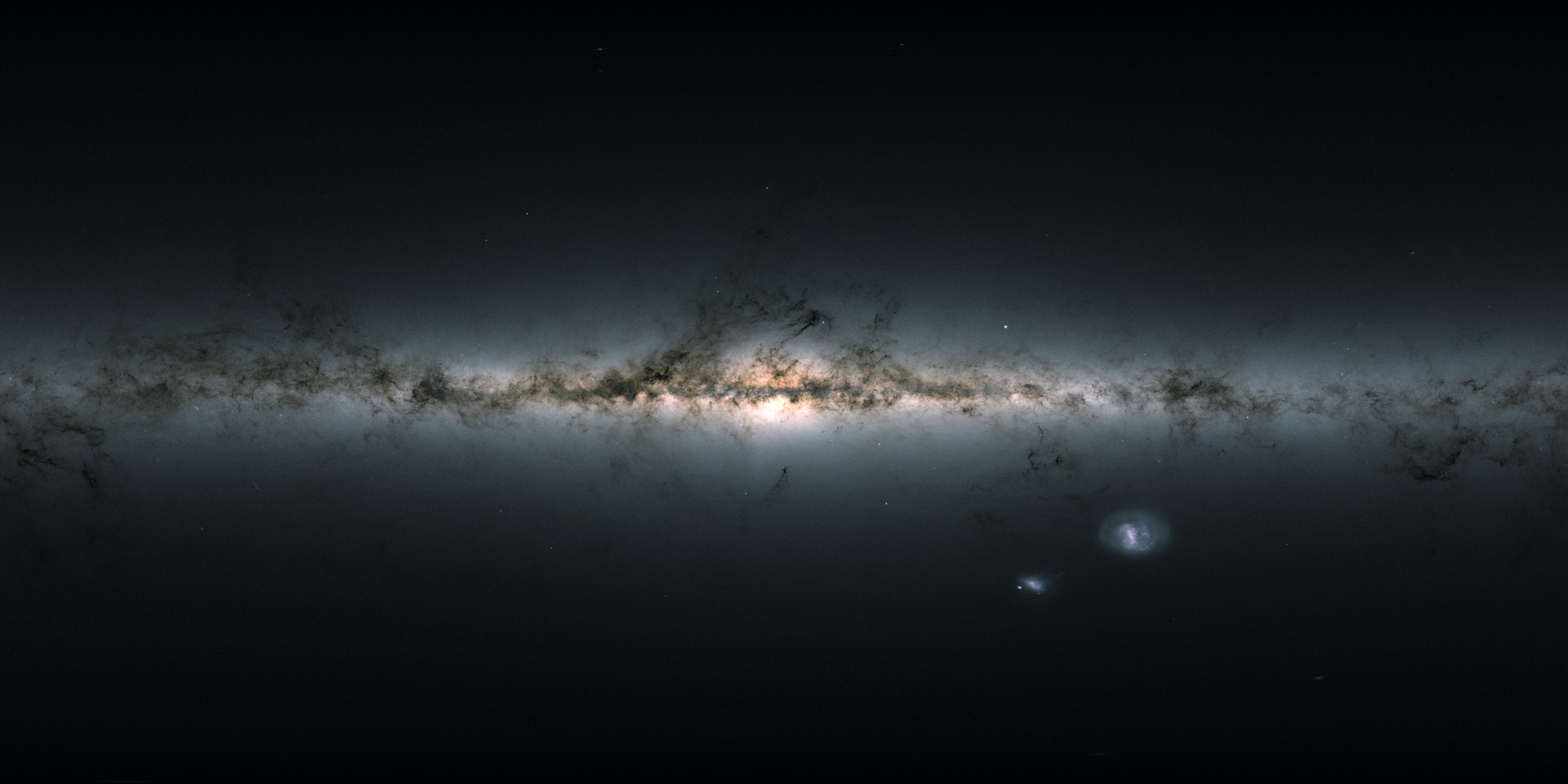Astronomers Baffled by 'Cosmic Mountain Ranges' Jutting Through the Milky Way
They have very little idea how these stunning geographic features form.

To us, the night sky may look like a random splattering of stars, but astronomers are learning that in some regions of our galaxy, stars have clumped into features that resemble ones on Earth — streams, waves, arches and mountain ridges.
Tectonic activity creates Earth's wide array of features, but scientists aren't exactly sure what's making those stellar mimics in the Milky Way. Now, researchers are testing for a culprit, including forces coming from outside of our galaxy. The real suspect, though, might just be the Milky Way itself.
Related: 11 Fascinating Facts About Our Milky Way Galaxy
Scientists describe the Milky Way as a barred, spiral galaxy — essentially shaped like a sunny-side-up egg, with a pinwheel distribution of stars. But on a smaller scale, there's a lot more detail hiding in this galactic topography.
Since 2013, a European Space Agency mission called Gaia has run a census of the Milky Way, with the goal of cataloging more than 1 billion stars. Using new data released in April 2018 on the precise measurements of stars' locations and movements for an additional 550 million objects, astronomers can now explore the galaxy with new dimensionality.
While these galactic explorations have uncovered new terrain, such as those ridges and arches, scientists have been unable to fully explain how star structures are formed. A team led by astronomers at the University of Sydney, Australia, decided to try to recreate in computer models some of the features that they see in the stars.
The researchers focused on a series of eight ridges in the Milky Way that are folded up alongside each other like a mountain range. The Gaia data showed that the ridges, which were sandwiched together in the middle layer of the Milky Way's disk, each had collections of unique stars studding their summits. Using data from another mission that analyzes the composition of stars, they noticed that all of the stars had elemental compositions that were similar to those of the sun. Since elemental composition can hint at stellar age, this told them that these young stars weren't scattered as much as older stars were, which helps in understanding how the ridges formed.
Sign up for the Live Science daily newsletter now
Get the world’s most fascinating discoveries delivered straight to your inbox.
Theories about how such ridges and other features are created fall into two categories: internal and external. Some theories propose that internal galaxy mechanisms are key to forming galactic geography. For instance, gravitational interactions may generate resonant waves that create bigger clumps of matter from smaller ones. Alternatively, friction between the stars, gases and dust in the galaxy can lead to the creation of these topographic features, just as clothes in a washing machine become tangled together as they move past one another in the cleaning process. Other theories propose that some external feature moved through the galaxy, like another small dwarf galaxy, and that's what wrinkled up the stars. (To picture this theory, imagine dragging your feet while crossing a rug, causing it to fold up.)
The team used computer simulations of these internal and external processes to see if the distribution of stars could be recreated under different conditions. They found that the ridges more closely matched those created in isolated regions through an internal process called phase-mixing, in which groups of stars gradually mix, like rum and coke being stirred in a cocktail, due to the morphing of the spiral arms over time. Furthermore, the presence of young stars, which haven't had as much time to scatter as older stars, in the ridges also suggested a nearby force was the source for the features. In simulations of regions that had been gravitationally hit by a passing galaxy, the results showed much taller ridges than the ones seen in the Milky Way.
So the height of ridges "might be one way to discriminate between internal and external processes," said Shourya Khanna, astronomer at the University of Sydney and lead author on the new paper.
There are still some limitations, though. The researchers have yet to model gas in their simulation, which may affect the results. Research has found evidence that a nearby galaxy once passed through the Milky Way. It could be this type of external interaction that tends to create streams of stars, while the internal processes — like phase-mixing — are more responsible for ridges, the study suggests. With many stars left to catalog, Gaia may yet provide astronomers with more clues about the forces that shape our galaxy's stunning geography.
"The region of the galaxy where we currently have a lot of information is quite near the sun, but forthcoming Gaia releases should extend the size of the region," said Alice Quillen, astronomer at the University of Rochester, who was not involved in the study.
The scientists published their findings online in the preprint journal arXiv, and have submitted them for publication in the journal Monthly Notices of the Royal Astronomical Society.
- 10 Interesting Places in the Solar System We'd Like to Visit
- 15 Amazing Images of Stars
- The 12 Strangest Objects in the Universe
Originally published on Live Science.

Mara Johnson-Groh is a contributing writer for Live Science. She writes about everything under the sun, and even things beyond it, for a variety of publications including Discover, Science News, Scientific American, Eos and more, and is also a science writer for NASA. Mara has a bachelor's degree in physics and Scandinavian studies from Gustavus Adolphus College in Minnesota and a master's degree in astronomy from the University of Victoria in Canada.










